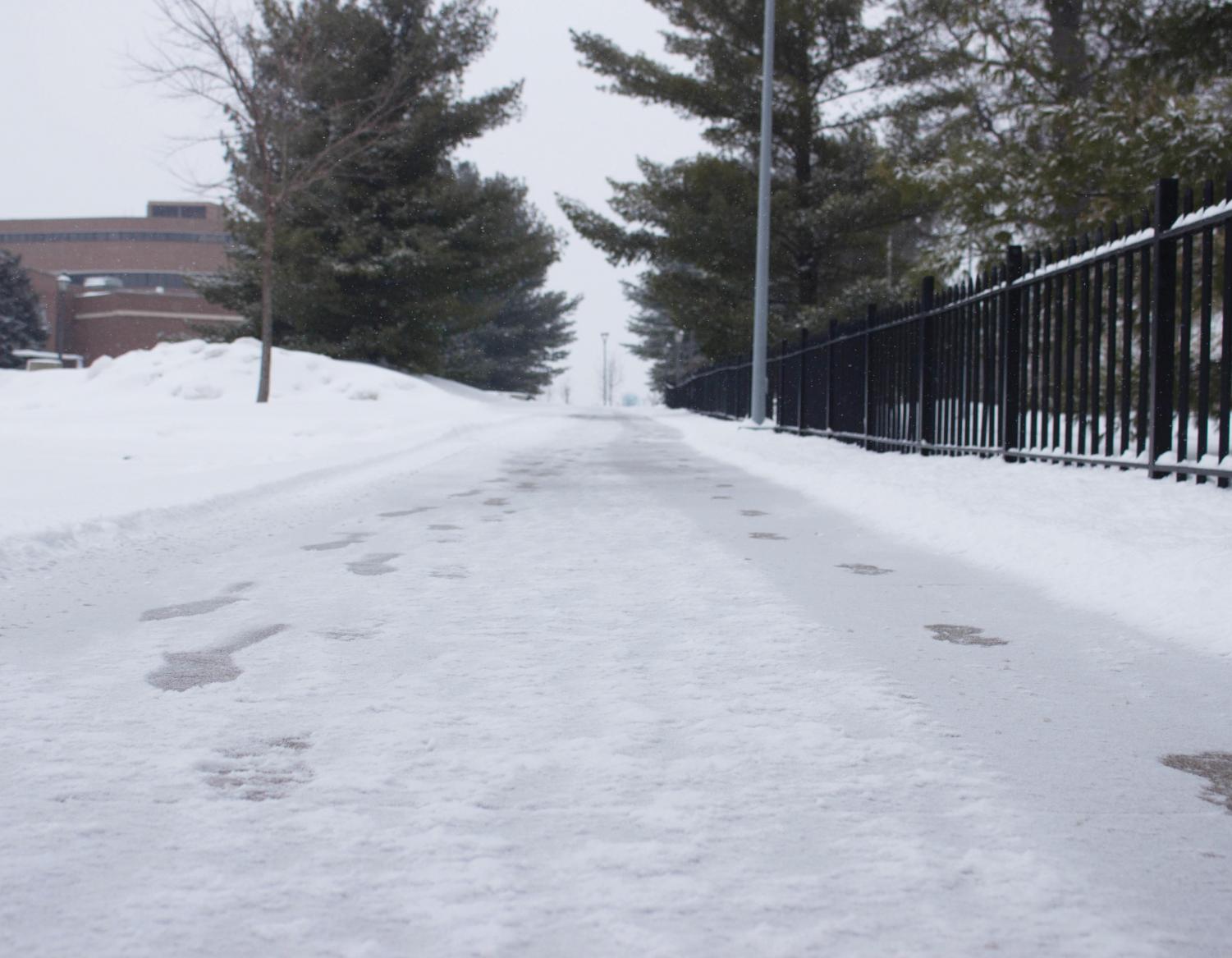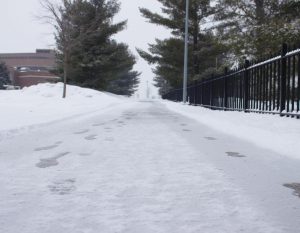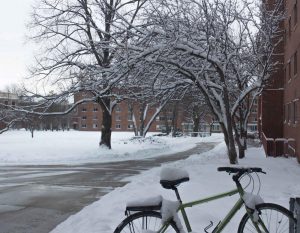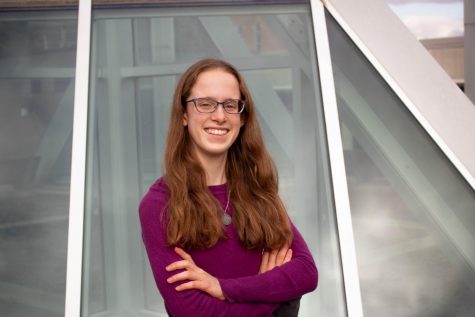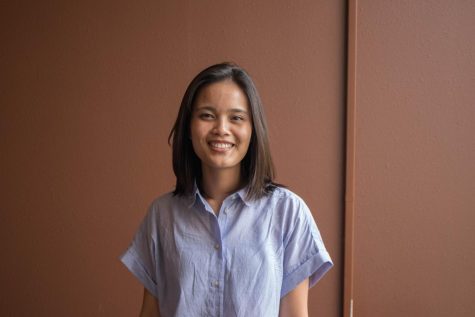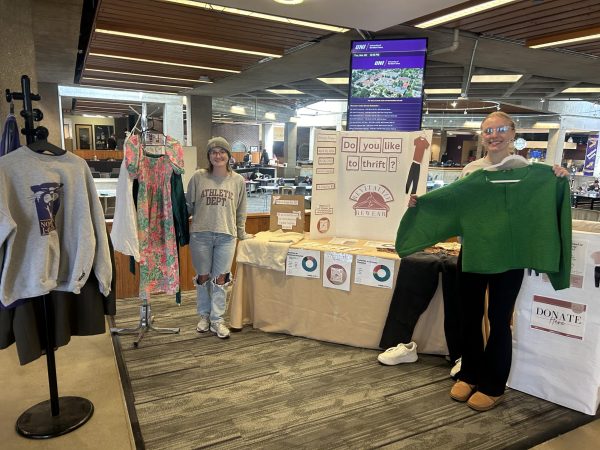Winter weather survival: mental health
Feb 21, 2019
From Arctic wind chills to blizzards and ice storms, this semester’s adverse winter weather has driven many students indoors. The lack of exposure to natural light can contribute to a mental health condition known as seasonal affective disorder (SAD).
SAD is a “recurrent major depressive disorder with a seasonal pattern usually beginning in fall and continuing into winter months,” according to a 2015 article from the National Institute of Mental Health (NIMH). Its main symptoms include feelings of hopelessness, worthlessness, low energy, lack of concentration and sleep problems.
The disorder is estimated to affect approximately 10 million Americans. There are many contributing factors; unfortunately for college women, being young and being female are two of the top culprits. NIMH reports that SAD is diagnosed four times more often in women than men and is most likely to appear in patients in their late teens and early 20s. Living a greater distance from the equator also plays a role. NIMH notes that nine percent of people in New England or Alaska have SAD, while only one percent of those in Florida do.
Regardless of age or hometown, one factor connected with SAD — as well as overall physical wellness — is exposure to natural light.
“Light influences circadian rhythms. It influences melatonin. It influences other hormones,” said Gowri Gulwadi, an interior design professor who has conducted research on light, its effects on health and its connection to architectural design. “Circadian rhythms are important for our cycles of sleep and being awake. So, if you think about us on a college campus, we may be unintentionally upsetting those cycles because of staying up late to work on things.”
Darcie Davis-Gage, division chair and coordinator of the UNI Counselor Education Program, added that the blue-screen light emitted by smartphones and computers causes the brain to produce chemicals which can throw sleep schedules out of whack.
“I think we start seeing all these threads that converge,” Gulwadi said. “We see the impact of light on health, we see the impact of sleep on health, and we see that light and sleep are connected. And so, there’s this very complex interwoven relationship between these factors.”
That relationship and the knowledge that sleep problems are a common symptom of SAD led to the development of light therapy. In this form of treatment for SAD, patients sit in front of small devices called “light boxes” to increase their exposure to natural light. College campuses have begun investing in these light boxes, including the University of Iowa, which recently purchased 40 light therapy lamps for students to check out for up to two weeks.
While UNI doesn’t have any light lamps yet, students seeking to increase their exposure to natural light may benefit from a little-known secret on campus: the Sabin Hall Light Lounge.
Thanks to its 2011 renovation, Sabin Hall has a gold-level Leadership in Energy and Environmental Design (LEED) certification from the U.S. Green Building Council (USGBC), meaning that its construction shows commitment to sustainability and “green” design. Gulwadi and Davis-Gage were both instrumental in the certification process. They say the Light Lounge emerged as part of the focus on sustainable, environmental design.
The lounge, an atrium within Sabin, features large glass ceilings which allow natural light to penetrate throughout all levels of the building’s core. The goals of the light lounge, according to Gulwadi, were to “increase knowledge about the importance of light and its suggested therapeutic effect on symptoms of SAD, to offer potential relief for any building users suffering from SAD, and to provide observation and research opportunities for UNI students and faculty.”
The lounge combines the benefits of natural light from the open windows with the use of artificial full-spectrum light, which Davis-Gage says is much more similar to natural light than a typical fluorescent light bulb would be. It’s full-spectrum light which is used in the light boxes like those purchased at the University of Iowa.
Davis-Gage explained that although the lounge offers light in less “intense” doses than the light boxes, the lounge’s public environment brings a unique social aspect.
“With the light lounge, it’s a bigger space and it’s not as intense as a light box would be, but the idea of this was more overall wellness benefits, not necessarily just for those with seasonal affective disorder, but benefiting a much wider group of people,” Davis-Gage said. “With any type of depression, people tend to isolate, and this is a more social gathering space, which offers people opportunities to connect.”
Both Gulwadi and Davis-Gage emphasize that the lounge is not a cure for SAD, but rather a chance for students to hopefully alleviate symptoms. For students seeking help with winter-related mental health issues like SAD, the UNI Counseling Center offers free clinical services for all enrolled UNI students. Students can schedule an initial assessment appointment by calling 319-273-2676.
According to NIMH, proper diet and exercise can also go a long way in combating the winter blues. But for those students looking to let the sunshine in, the Sabin Hall Light Lounge can be a great place to find both natural light and social connections.


